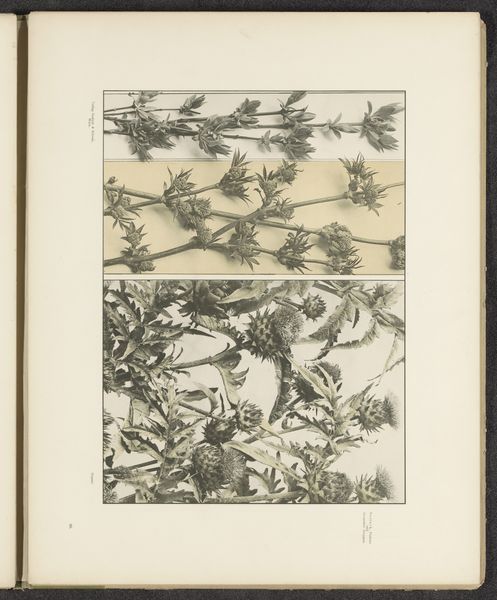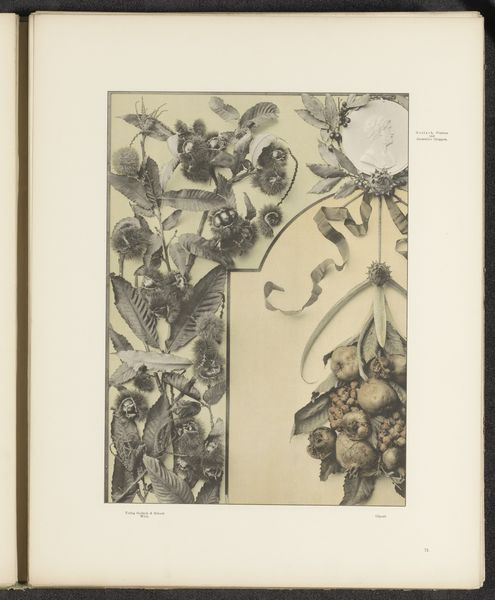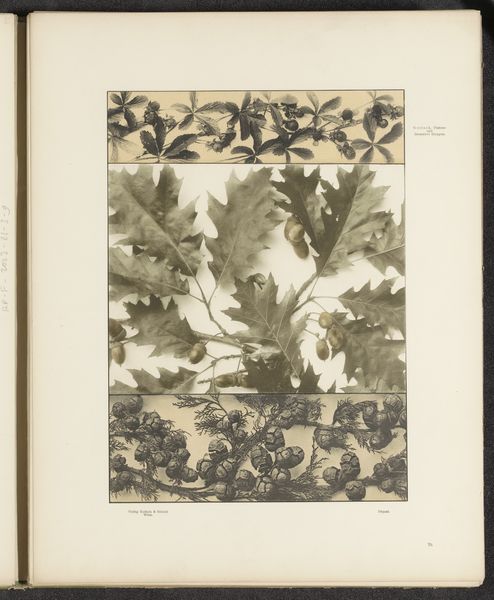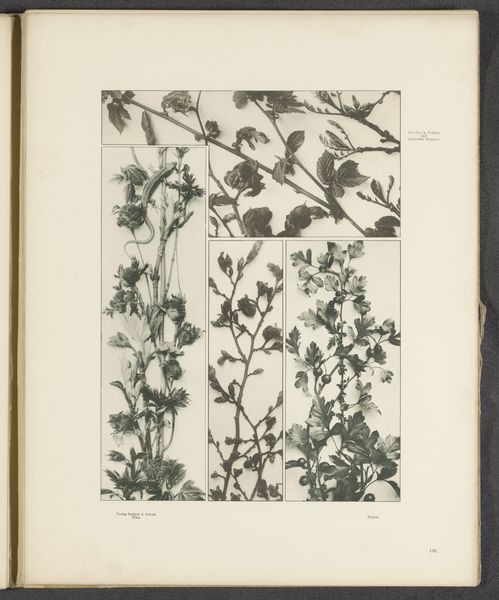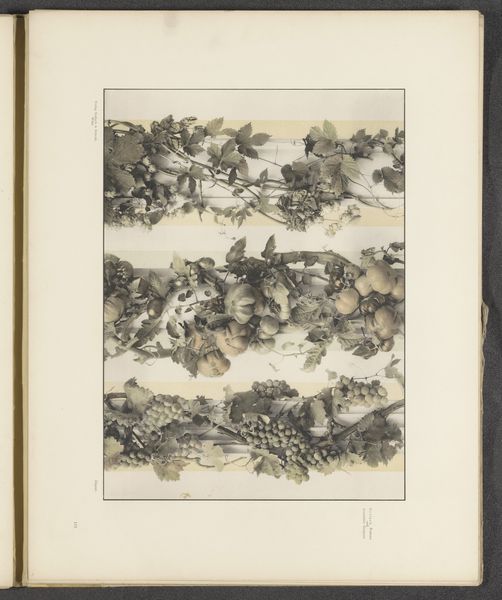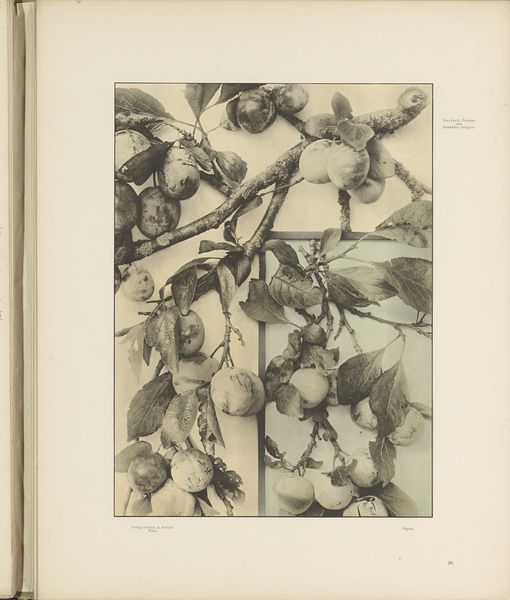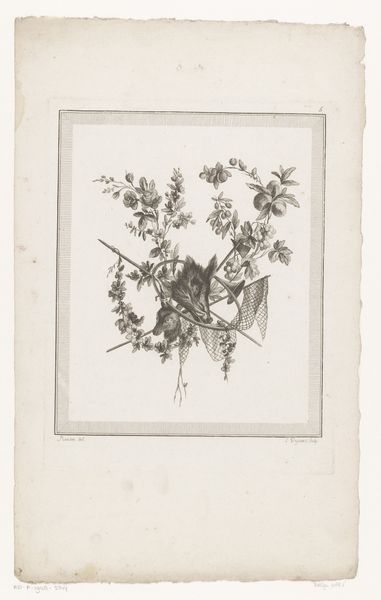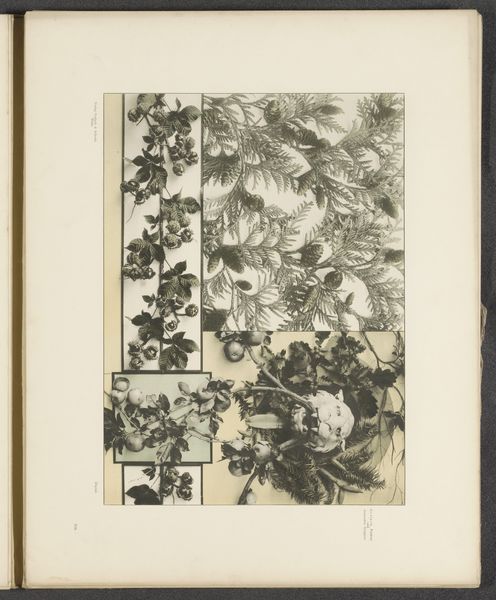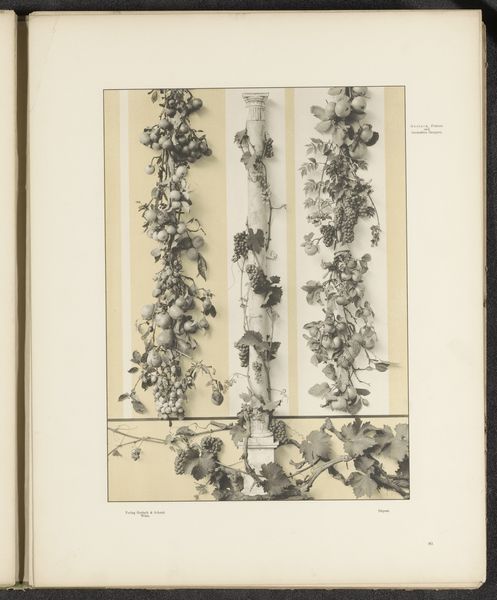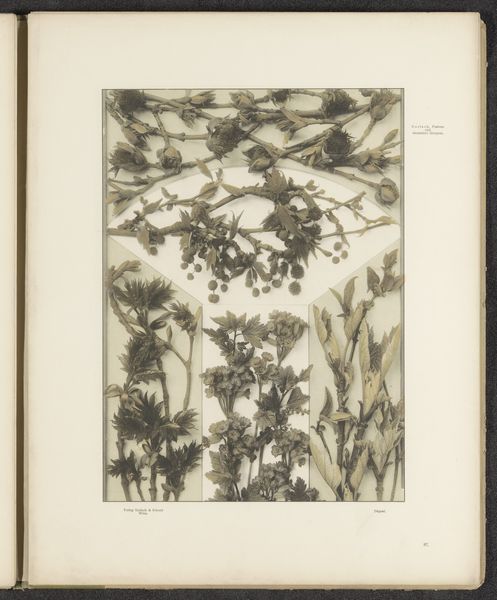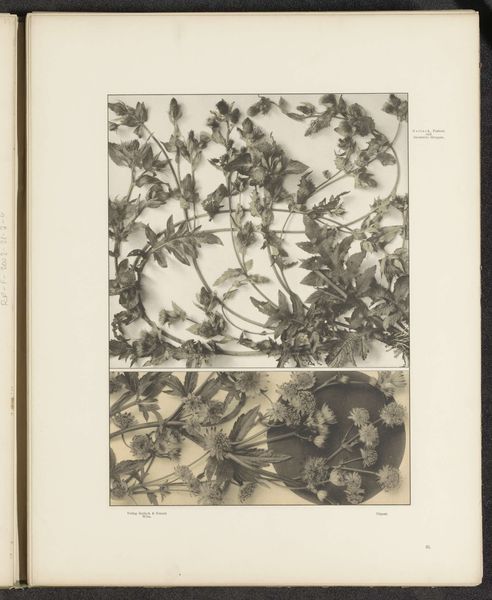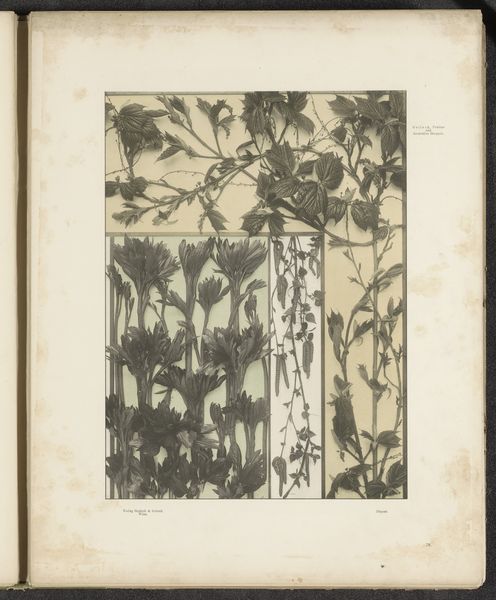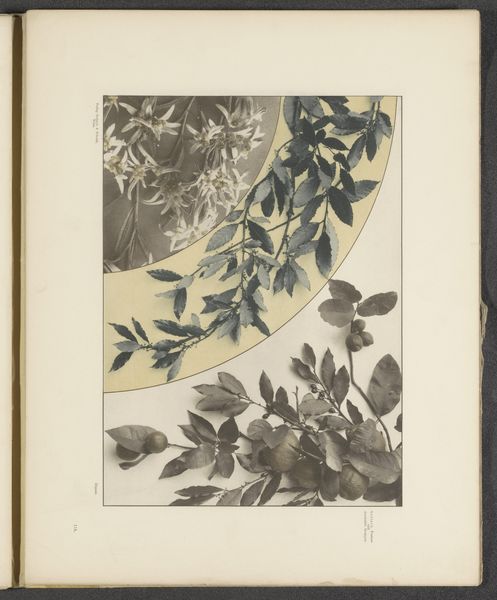
Fries van gedroogde bladeren en een festoen met meloenen, maiskolven en kokosnoten before 1897
0:00
0:00
drawing, print, paper, ink
#
drawing
#
ink painting
# print
#
paper
#
ink
#
coloured pencil
#
watercolour illustration
#
botanical art
#
watercolor
Dimensions: height 214 mm, width 291 mm
Copyright: Rijks Museum: Open Domain
Editor: This is "Fries van gedroogde bladeren en een festoen met meloenen, maiskolven en kokosnoten," made before 1897, using print, ink, and paper. It’s interesting; the contrast between the dried leaves on the left and the fruits and vegetables on the right feels almost… symbolic. What do you see in this piece, especially considering its historical context? Curator: This work presents a fascinating interplay between nature, culture, and colonialism. These arranged botanicals prompt questions about the history of botanical illustration as tied to exploration and exploitation. Consider, what narratives are implicit in grouping "exotic" fruits with "domestic" foliage? How do power dynamics of trade routes show up in this depiction? Editor: So, it's not just about beauty, but about trade and power? The “exotic” versus “domestic” plant divide seems relevant. But isn't it also a celebration of nature? Curator: Certainly, there’s a visual appreciation, but it's layered with colonial undertones. These botanical works often documented resources to be extracted and commodified. Who benefitted from this representation? What knowledge was excluded or prioritized? Consider how indigenous perspectives might contrast with the implied European gaze here. Editor: That really reframes how I see it. The arrangement now feels less like an innocent display and more like a…statement. Curator: Precisely. It highlights the way seemingly benign images can carry significant ideological weight, reinforcing colonial narratives through what is chosen to be represented and how. It begs the question: whose story does this artwork tell? Editor: I guess I'll never look at botanical art the same way again. Thanks, that gives me a lot to think about! Curator: And it shows how art can both reflect and shape our understanding of history, identity, and power structures.
Comments
No comments
Be the first to comment and join the conversation on the ultimate creative platform.
